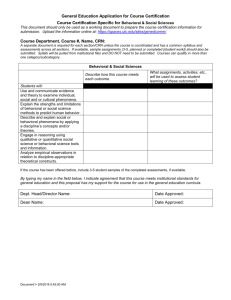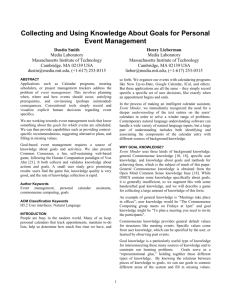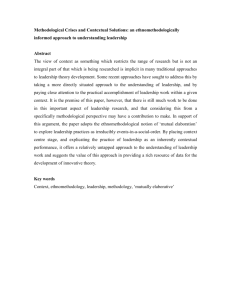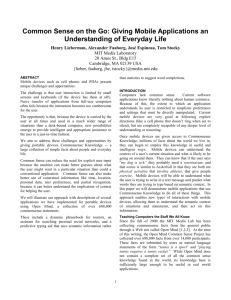Mini Fieldwork and Research Assignment I
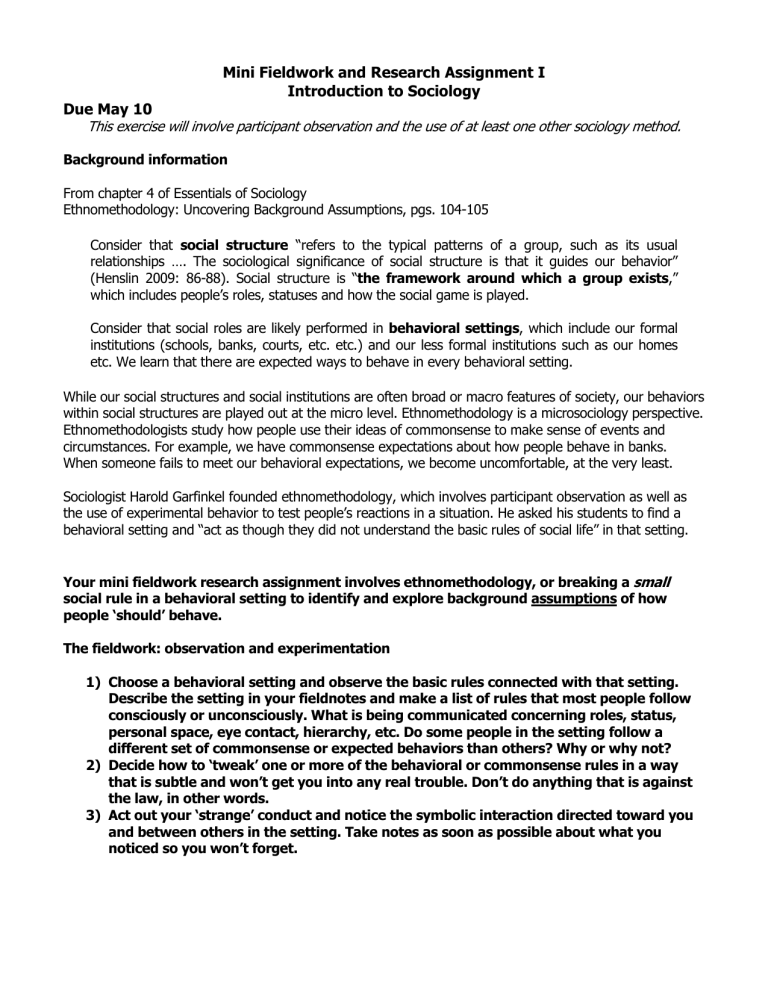
Mini Fieldwork and Research Assignment I
Introduction to Sociology
Due May 10
This exercise will involve participant observation and the use of at least one other sociology method.
Background information
From chapter 4 of Essentials of Sociology
Ethnomethodology: Uncovering Background Assumptions, pgs. 104-105
Consider that social structure “refers to the typical patterns of a group, such as its usual relationships …. The sociological significance of social structure is that it guides our behavior”
(Henslin 2009: 86-88). Social structure is “the framework around which a group exists,” which includes people’s roles, statuses and how the social game is played.
Consider that social roles are likely performed in behavioral settings, which include our formal institutions (schools, banks, courts, etc. etc.) and our less formal institutions such as our homes etc. We learn that there are expected ways to behave in every behavioral setting.
While our social structures and social institutions are often broad or macro features of society, our behaviors within social structures are played out at the micro level. Ethnomethodology is a microsociology perspective.
Ethnomethodologists study how people use their ideas of commonsense to make sense of events and circumstances. For example, we have commonsense expectations about how people behave in banks.
When someone fails to meet our behavioral expectations, we become uncomfortable, at the very least.
Sociologist Harold Garfinkel founded ethnomethodology, which involves participant observation as well as the use of experimental behavior to test people’s reactions in a situation. He asked his students to find a behavioral setting and “act as though they did not understand the basic rules of social life” in that setting.
Your mini fieldwork research assignment involves ethnomethodology, or breaking a social rule in a behavioral setting to identify and explore background assumptions of how people ‘should’ behave.
The fieldwork: observation and experimentation
small
1) Choose a behavioral setting and observe the basic rules connected with that setting.
Describe the setting in your fieldnotes and make a list of rules that most people follow consciously or unconsciously. What is being communicated concerning roles, status, personal space, eye contact, hierarchy, etc. Do some people in the setting follow a different set of commonsense or expected behaviors than others? Why or why not?
2) Decide how to ‘tweak’ one or more of the behavioral or commonsense rules in a way that is subtle and won’t get you into any real trouble. Don’t do anything that is against the law, in other words.
3) Act out your ‘strange’ conduct and notice the symbolic interaction directed toward you and between others in the setting. Take notes as soon as possible about what you noticed so you won’t forget.
The paper
4) Use your fieldnotes to help you describe the setting, the usual rules, and commonsense assumptions about the behavioral setting.
5) Consider how the setting is embedded in a larger social institution and macro social structure. For example, what do the behavioral setting expectations tell us about social class, status, etc.?
6) Describe the behavioral ‘rule’ that you broke and why you chose that approach.
Describe how you performed your experiment.
7) Describe the reaction of other people in the setting. If they reacted, how did they let you and others know about their discomfort? Did they do anything to try and maintain a status quo in the environment? Was more than a behavioral code challenged, meaning did the experiment challenge any role, status, or social structure assumptions?
8) When you use concepts such as social structure, ethnomethodology, etc. etc. in your paper, briefly define them at some point, citing the sources of your definitions.
The paper should be approximately three double spaced pages, 12-point type, and 1-inch margins. Be prepared to share some of your findings with the class.




